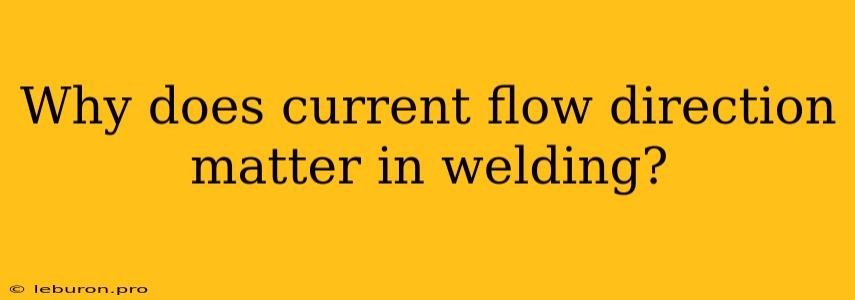The direction of current flow in welding, known as polarity, plays a crucial role in determining the characteristics of the weld and the overall welding process. While it might seem like a simple detail, polarity significantly impacts the heat distribution, arc stability, weld penetration, and even the type of electrode used. This article delves into the intricacies of polarity in welding and its influence on the welding process.
Understanding Polarity in Welding
Polarity in welding refers to the direction of current flow within the welding circuit. The electrical circuit in welding consists of a power source, electrode, work piece, and a return path for the current. Polarity is determined by the connection of the electrode to the power source, with two main types:
- Direct Current Electrode Negative (DCEN): In DCEN, the electrode is connected to the negative terminal of the power source. This configuration directs the majority of heat towards the electrode, resulting in a hotter electrode.
- Direct Current Electrode Positive (DCEP): In DCEP, the electrode is connected to the positive terminal of the power source. This configuration directs the majority of heat towards the workpiece, making the workpiece hotter.
Impact of Polarity on Welding Process
The polarity chosen significantly impacts the welding process in several ways:
1. Heat Distribution
The primary impact of polarity is on heat distribution. In DCEN, the electrode is hotter, which facilitates easier arc starting and better arc stability. This is particularly beneficial for welding thin materials where excessive heat can cause distortion. Conversely, in DCEP, the workpiece receives more heat, making it ideal for welding thicker materials where deeper penetration is required.
2. Electrode Consumption
The difference in heat distribution also affects electrode consumption. In DCEN, the electrode is subject to more heat, leading to a faster rate of melting and consumption. In DCEP, electrode consumption is slower due to the lower heat input.
3. Penetration
Polarity directly influences the depth of penetration achieved in the weld. DCEP, with its greater heat input at the workpiece, generally provides deeper penetration, making it suitable for thicker materials and applications requiring strong welds. DCEN, on the other hand, provides shallower penetration, which is ideal for thinner materials and delicate applications where excessive penetration could result in burn-through.
4. Arc Stability
The stability of the arc is influenced by polarity. DCEN tends to provide a more stable arc, especially with thin materials and high current settings. This is because the electrode is hotter, leading to a more consistent arc. DCEP can experience greater arc instability, especially with thin materials, due to the lower heat input at the electrode.
5. Electrode Types
The type of electrode used in welding can also be influenced by polarity. Some electrodes are specifically designed for use with DCEN, while others are designed for DCEP. This is because the electrode's composition and coating can affect its melting rate and arc characteristics based on the polarity chosen.
Choosing the Right Polarity
The choice of polarity in welding ultimately depends on the specific application and the desired weld characteristics. The following factors should be considered:
- Material thickness: Thicker materials generally require DCEP for deeper penetration.
- Heat sensitivity: Thin materials are often more susceptible to heat distortion and require the lower heat input of DCEN.
- Electrode type: Some electrodes are designed for specific polarities and should be used accordingly.
- Welding position: Different welding positions may require different polarities for optimal results.
- Arc stability: DCEN often provides better arc stability, especially with thin materials and high current settings.
Conclusion
The direction of current flow, known as polarity, plays a crucial role in welding, impacting heat distribution, arc stability, penetration, electrode consumption, and even the type of electrode used. Understanding the principles of polarity allows welders to select the appropriate configuration to achieve the desired weld characteristics and optimize the welding process. Choosing the correct polarity ensures efficient, high-quality welding, regardless of the material, thickness, or application.
